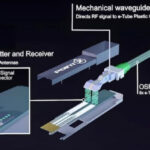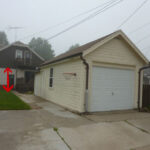Running overhead power to a detached garage is a safe, efficient, and cost-effective way to supply electricity when trenching for underground cable isn’t practical. Whether you’re installing lighting, outlets, or heavy-duty tools, understanding how to properly plan, wire, and support your overhead electrical line is essential for both safety and code compliance.

How to Run Overhead Power to a Detached Garage
1. Planning the Installation
Before running any overhead wire, start with careful planning.
First, determine your power needs — will the garage only require lights and a few outlets, or will it power large equipment like welders or compressors? This will affect the wire size, breaker rating, and conduit choice.
Next, check local electrical codes and consult your utility provider if you’re tapping from an existing service drop. Most areas follow the National Electrical Code (NEC), which specifies minimum clearances and grounding requirements for overhead electrical installations.
2. Choosing Between Overhead and Underground Power
Overhead power is often used when the distance between your house and garage is short (under 100 feet), and when soil conditions make trenching difficult or expensive.
Advantages of overhead power:
Lower installation cost
Easier maintenance and repairs
Faster setup
Disadvantages:
Exposed to wind, tree branches, and weather damage
Less visually appealing than buried cable
If you live in an area with frequent storms or strict appearance rules, consider underground wiring instead.
3. Materials and Equipment You’ll Need
To run overhead power to a detached garage, prepare the following materials:
Triplex service wire (for single-phase 120/240V power)
Service mast and weatherhead
Insulators and support brackets
Metal conduit (RMC or EMT) for entry points
Anchors or pole hardware for the house and garage ends
Grounding rods and copper grounding wire
Disconnect switch or subpanel inside the garage
Proper PPE (gloves, safety glasses, insulated ladder)
Make sure all materials are rated for outdoor use and comply with your local utility standards.
4. Installing Overhead Power to the Garage
Step 1: Mount the Service Mast
Install a service mast on both the house (or main building) and the garage. Each mast should extend high enough to maintain safe clearance — typically at least 12 feet above driveways and 10 feet above walking areas.
Step 2: Attach the Weatherhead
At the top of each mast, install a weatherhead to protect the electrical wires from rain. The conductors should extend from the weatherhead with drip loops so that water cannot follow the wire into the conduit.
Step 3: Install the Overhead Wire
Run a triplex cable between the two structures. One conductor serves as the neutral and messenger (support wire), while the others carry the hot lines.
Attach the cable to insulators or dead-end clamps at each end, ensuring it’s tensioned properly without sagging too close to the ground.
Step 4: Connect to the Garage Panel
Feed the conductors from the weatherhead into the conduit and down to a subpanel or disconnect switch in the garage. This panel distributes power to lights, outlets, or any equipment installed inside.
Always size the subpanel and breakers according to your load requirements — for example, a 60-amp subpanel for a small workshop or a 100-amp subpanel for heavier equipment.
Step 5: Grounding and Bonding
Install a ground rod near the garage and connect it to the subpanel’s grounding bar using #6 or #8 AWG copper wire.
Proper grounding is essential for preventing electrical shock and protecting your system during lightning events.
5. Overhead Wiring Clearances
Clearances are critical for safety and code compliance. The NEC typically requires:
10 feet (3.0 m) above sidewalks or patios
12 feet (3.6 m) above residential driveways
18 feet (5.5 m) above public roads
3 feet (0.9 m) minimum horizontal clearance from windows or doors
If trees or other obstructions are nearby, position your wire high enough to avoid contact.
6. Safety Tips and Common Mistakes to Avoid
Never attach wires directly to buildings without insulators. Always use proper hardware to prevent abrasion and short circuits.
Maintain adequate sag and tension. Over-tensioning can damage the messenger strand; too loose can lead to drooping or contact hazards.
Turn off the main breaker when connecting to the main service.
Check for local permits. Many municipalities require inspections for new service connections.
Hire a licensed electrician for the final tie-in to your main electrical service if you’re not qualified.
7. Example Setup
For a standard detached garage 50–80 feet from the house:
Use #4 or #6 AWG aluminum triplex wire for a 60A subpanel
Mount service masts with weatherheads on both buildings
Maintain 12 feet of clearance above driveways
Install a ground rod at the garage
This configuration is both economical and NEC-compliant.
8. Conclusion
Running overhead power to a detached garage is an effective solution when you want reliable electricity without the cost and labor of trenching. By following code requirements, using weather-resistant materials, and ensuring proper grounding, you can enjoy a safe, durable power connection that meets your garage’s electrical demands.
If you’re unsure about wire sizing or connection details, consult a licensed electrician or your local building authority before starting the project.
⚡ Reliable Overhead Power Cables from TOT Wire & Cable
At TOT Wire & Cable, we supply a wide range of overhead electrical cables, including AAC, AAAC, ACSR, and triplex service drop wires — perfect for residential and light commercial applications.
📞 Contact us today to find the right cable for your garage or outbuilding project — combining safety, quality, and affordability.





